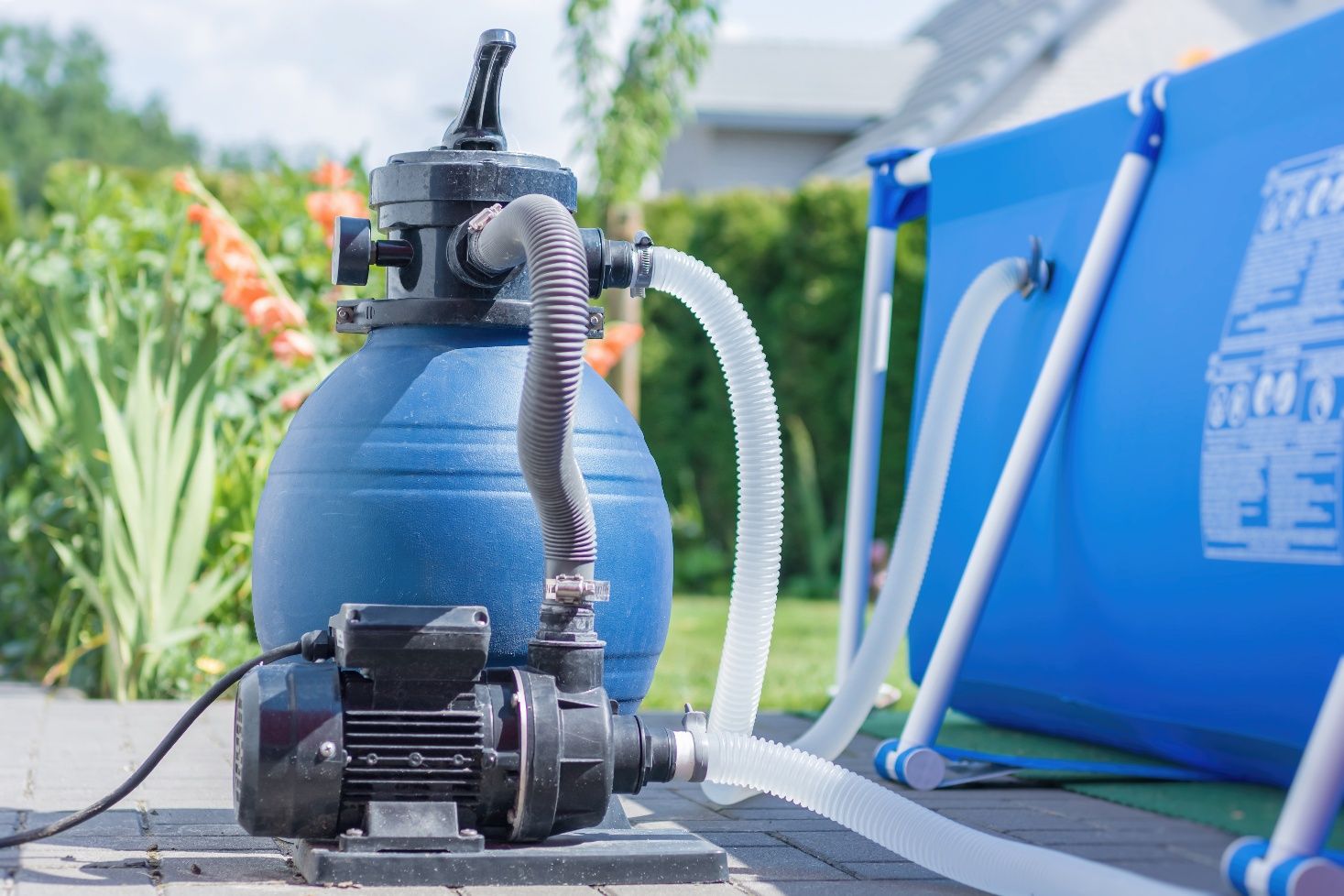
Owning a pool often comes with more responsibilities than new owners often expect when they start their pool journeys. Nearly everyone knows it takes time, purposeful effort, and some non-trivial expenses to keep a pool clean. The pool’s pump and filter system is the cornerstone of its cleanliness -- but did you know you’re occasionally supposed to clean out your pump and filter system, too?
The process for cleaning a pool’s pump and filter system can differ depending on the type of filter you use. Pool sand filters are common companions for inground pools, and the cleaning process for these filters is typically known as backwashing.
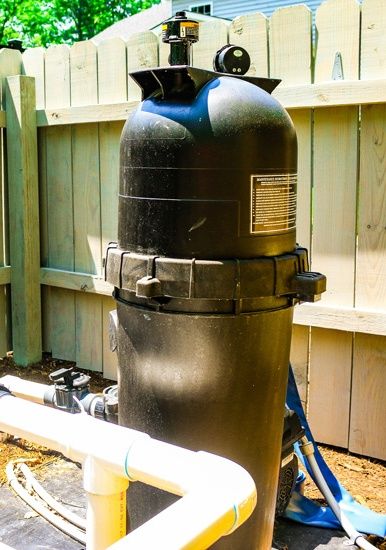
If you’re not sure how to properly backwash your pool filter, you’ve come to the right place.
In this article, we’ll cover how to backwash sand filters from major brand-name pools such as Hayward and Pentair.
We’ll also briefly review the cleaning process for other types of pool filters, which sometimes don’t need to be backwashed at all.
We hope you’ll learn enough to feel confident about using, cleaning, and backwashing your pool’s sand filter -- and if you’re still shopping for the pool of your dreams, the information here might help you decide which pump and filter system to install with that pool.
What is backwashing?
When you backwash a pool filter, you’re really just cleaning out any accumulated dirt, debris, chemical build-up, and other gunk that might impede that filter’s ability to keep your pool’s water clean, sparkling clear, and enjoyable to swim in.
Here’s the thing, though... you don’t need to backwash every type of pool filter.
There are three common types of pool filters:
- Sand pool filters
- Diatomaceous earth (DE) pool filters
- Cartridge pool filters
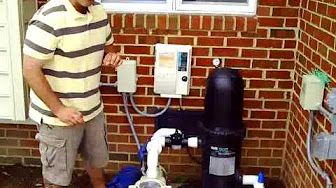 Sand and cartridge filters are more common. DE filters have seen some wider adoption due to their similarities to sand filters and their superior filtering capabilities.
Sand and cartridge filters are more common. DE filters have seen some wider adoption due to their similarities to sand filters and their superior filtering capabilities.
However, we rarely recommend DE filters to our pool customers because the superior filtration of DE filters also requires comparatively more maintenance.
Both sand and DE filters need to be backwashed every once in a while. Cartridge filters don’t need backwashing.
And let’s be clear -- a pool filter is not the same thing as a salt water system, should you have one. Some pump and filter systems include built-in saltwater components. We’ve written a few articles about salt water system maintenance, and for general use of salt water systems. Check them out if you need further guidance!
If you're still trying to figure out what type of pool -- and what filter and sanitation systems to use -- try our Pool Type Selector tool. You can get ideas (and price ranges!) for your perfect pool in just a few clicks. Do you want a fiberglass pool with a salt water system, or a concrete pool with a sand filter? Click the button below to get answers to these questions, and many more:
How often should you backwash a pool?
Sand filters need to be backwashed every one to two weeks. This assumes you’re using the pool regularly, but you may need to backwash less often. The easiest way to know when it’s time to backwash your pool filter is to check the filter’s pressure gauge.
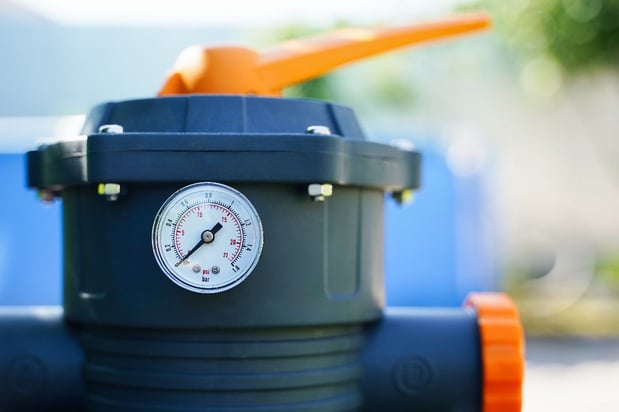
Pressure is usually measured in pounds per square inch, or PSI, in the United States.
As gunk builds up in the filter, it becomes harder for water to freely pass through and be cleaned. This raises the pressure in the filter housing.
You’ll want to backwash your sand (or DE) filter when its pressure reads 8 PSI or more above “normal.”
Filter manufacturers should list their normal operating PSI on their manuals or guidebooks, but you can also assess your filter’s “clean” PSI level by backwashing the filter and checking the pressure reading after you’re done.
Here’s how to backwash your sand filter when its PSI gets too high...
How to backwash a sand filter
This step-by-step guide may not apply to every sand filter, and yours may involve extra steps or play out somewhat differently. Please check your filter’s operating manuals to ensure you’re following the proper procedures.
- Turn off your pool pump.
- You may need to attach a backwash hose to your pool filter now.
- Lock the filter valve handle in the Backwash position.
- Turn the pool pump back on.
- Run the backwash process for two to three minutes -- or until pool water flowing through the filter’s sight glass is clear.
- Turn off the pump again.
- Lock the filter valve handle in the Rinse position.
- Turn the pump back on again.
- Run the rinse process for at least one minute, or at least until the water in the sight glass is clear.
- Turn off the pump again.
- You may want to remove the backwash hose, if you’re using one.
- Lock the filter valve in the standard Filter position.
- Turn on the pump again.
- Enjoy your clean pool!
Most sand-based pump and filter systems are “multiport” systems, which typically involves using a dedicated backwash hose with the Backwash port position.
You should never turn or adjust the valve while the pool pump is running. This could damage the valve and create leaks, which are never good news in any part of your pool.
Some filters -- more often DE filters -- use push/pull systems, which may still involve use of a backwash hose, but which may involve somewhat different valve settings than those outlined in the list above.
Let’s look at the process for backwashing a DE filter…
How to backwash a diatomaceous earth filter
Backwashing a DE filter plays out more or less identically to backwashing a sand filter, with one key difference: you’ll have to add more DE powder to your filter after resetting the valve to Filter, but before turning it back on for regular use.
Most DE filters can be topped up this way:
- After locking the filter valve in Filter…
- Verify in the filter manual to determine how much DE powder you’ll need.
- Prime the pool pump
- Open the strainer basket lid.
- Add water to the strainer basket and allow to strain.
- Turn the pool pump back on again.
- Mix the needed amount of DE powder with water to make a plaster-like solution called slurry (it should be pourable, but not quite liquid).
- Pour the slurry directly into the skimmer basket.
- Run the pump for at least half an hour to spread new DE through the filter.
- Enjoy your clean pool!
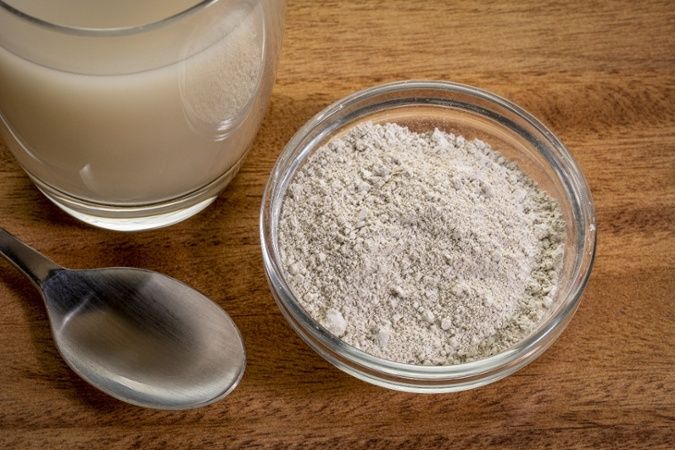 Diatomaceous earth powder and prepared slurry. You'll probably need more than this.
Diatomaceous earth powder and prepared slurry. You'll probably need more than this.
If you’ve got a push/pull valve instead of a multiport valve on your DE filter, you may need to toggle some switches in slightly different ways. Check your operating manual to make sure you follow the right steps. Regardless of valve type, any DE filter will need to be topped up with more DE after each backwash.
How to backwash a cartridge filter
Psych!
You don’t have to backwash a cartridge filter.
You will have to clean it off with a high-pressure hose -- a pressurized garden hose attachment typically does the trick -- every few weeks. It takes a few minutes each time, but it’ll create far less wastewater than backwashing, and there’s less that can go wrong.
Speaking of wastewater…
What should you do with pool filter backwash water?
Backwashing pushes a lot of water through your pool’s filter system, and it probably won’t be pretty when it comes back out.

This backwash water is considered wastewater, which means you shouldn’t attempt to use or reuse it.
It can’t go back in your pool. You don’t want to use it to water your yard. The chemicals you pull out of your pool could also be a danger to wildlife, especially if the water drains into any lakes, ponds, rivers, or streams nearby.
The best way to figure out what to do with backwash water would be to contact your local water authority. Conscientious pool builders can often connect you to these authorities, but it’s not always possible for a pool builder with a large service area to know who to ask.
These water authorities are often county-based, so a Google search with your county name and the words “water authority” can often be helpful.
Got any further questions about backwashing your pool that we didn’t answer here, or in one of the articles we’ve linked here? Please ask us in the comments. We’re happy to help pool owners make the most of their pool experiences!
At River Pools, we manufacture world-class fiberglass pools for customers across North America. If you're shopping around for a fiberglass pool, feel free to take a look at our catalog of models, visit our extensive video library, try out our pool cost calculator, or request custom pricing using the button below.


